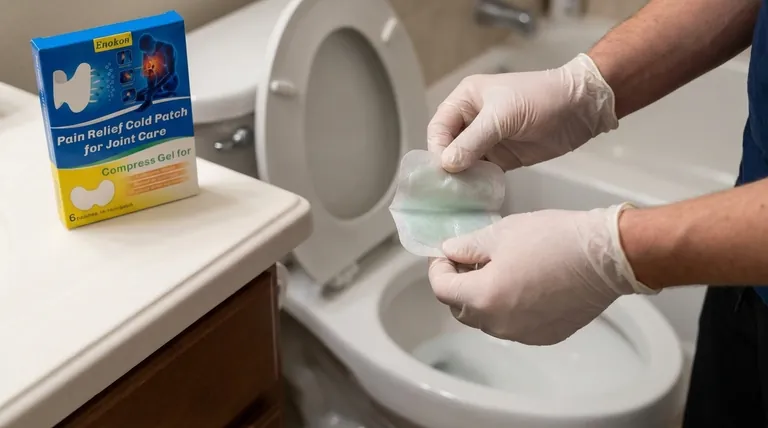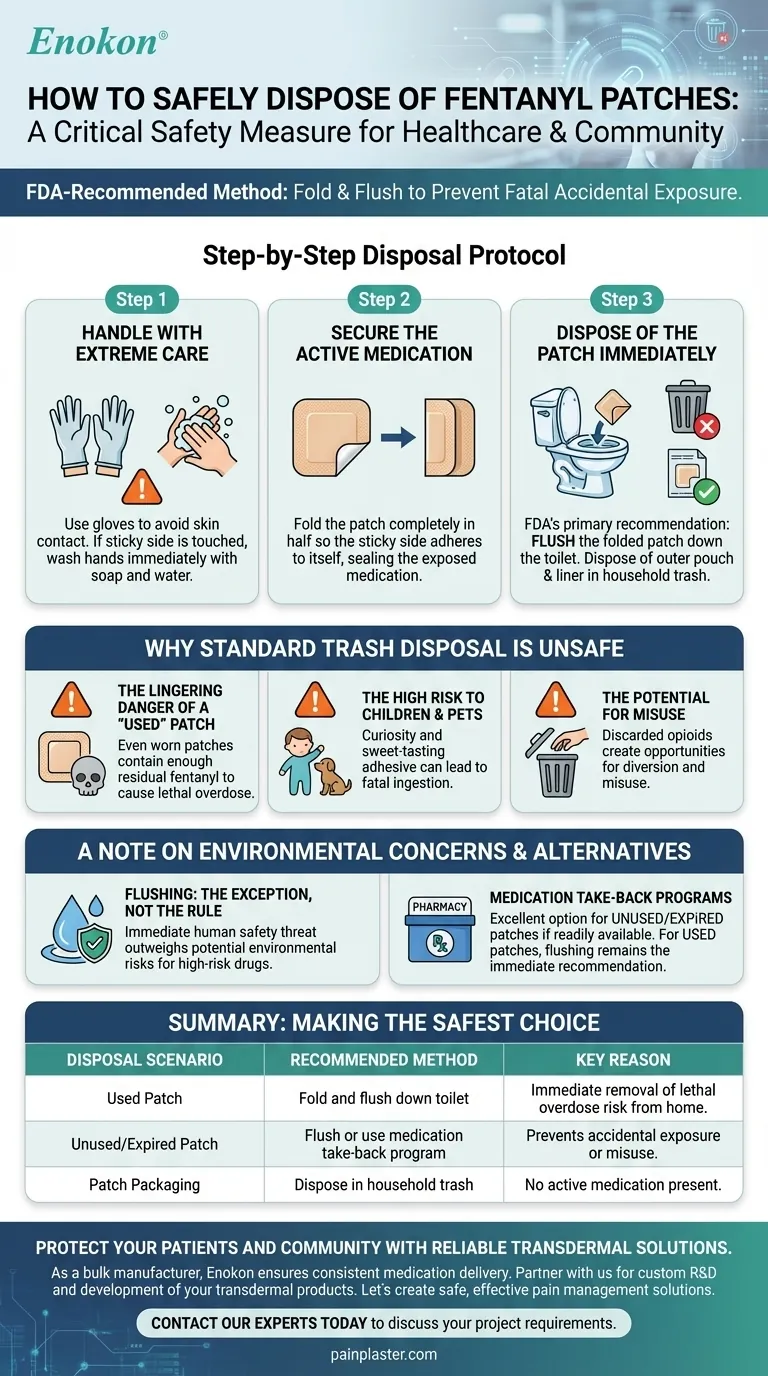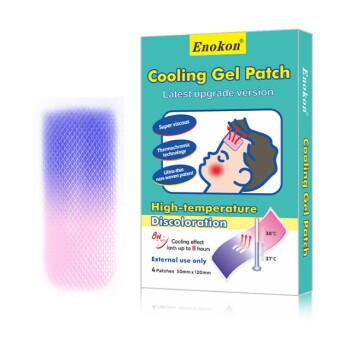Properly disposing of a fentanyl patch is a critical safety measure, not just a suggestion. The FDA-recommended method for both used and unused patches is to fold the patch in half with the sticky sides together and immediately flush it down a toilet. This prevents accidental exposure, which can be fatal, especially to children and pets.
Even after being worn, a fentanyl patch contains enough potent medication to cause a lethal overdose. The disposal method must prioritize the immediate and permanent removal of this risk from your home.

The Step-by-Step Disposal Protocol
Follow these steps precisely to ensure the safe handling and disposal of every fentanyl patch. This protocol applies to patches that have been used as well as those that are expired or no longer needed.
Step 1: Handle with Extreme Care
Always handle fentanyl patches carefully, preferably with protective gloves, to avoid accidental skin contact with the medication.
If you touch the sticky side of the patch, wash your hands with soap and water immediately.
Step 2: Secure the Active Medication
Take the patch and fold it completely in half so that the adhesive, or sticky side, sticks to itself.
This action seals the surface where the medication is most exposed, significantly reducing the risk of accidental contact.
Step 3: Dispose of the Patch Immediately
The FDA's primary recommendation is to flush the folded patch down the toilet. This removes the dangerous medication from your home environment right away.
The outer pouch and protective liner do not contain medication and can be safely thrown away in the household trash.
Why Standard Trash Disposal is Unsafe
Placing a fentanyl patch in the household trash is extremely dangerous. The reasons for the strict flushing protocol are based on the unique potency and risk profile of this specific medication.
The Lingering Danger of a "Used" Patch
A patch that has been worn for its prescribed time (e.g., 72 hours) still contains a significant amount of active fentanyl.
This residual amount is more than enough to cause a severe or fatal overdose if a child or pet chews on or ingests the patch.
The High Risk to Children and Pets
Curious children and pets are naturally drawn to items in the trash. The sweet taste that is sometimes added to the adhesive can make a discarded patch particularly attractive.
Flushing eliminates this household risk completely, which is why it is the recommended procedure.
The Potential for Misuse
Discarding a potent opioid in the trash creates an opportunity for diversion and misuse by others who may find it.
Proper disposal is a key part of responsible medication stewardship and community safety.
A Note on Environmental Concerns
While the guidance to flush medication is rare, it is intentional and necessary for a small number of specific high-risk drugs.
Why Flushing is an Exception, Not the Rule
The FDA maintains a specific list of medicines, including fentanyl patches, where the risk of accidental exposure is so great that it outweighs any potential environmental concerns.
For these specific substances, the immediate threat to human safety is the top priority.
Alternative: Medication Take-Back Programs
If a medication take-back program or an authorized collection site (like a local pharmacy) is readily available, this is an excellent disposal option for unused or expired patches.
However, for a used patch, the FDA still recommends immediate flushing to remove the risk from the home without delay.
Making the Safest Choice for Your Situation
Your goal is to remove the patch from your home in a way that permanently prevents anyone from coming into contact with it.
- If you are disposing of a used patch: The safest and most immediate method is to fold it and flush it down the toilet.
- If you have unused or expired patches: Using a medication take-back program is a great option, but flushing is the recommended alternative if a program is not accessible.
- If you are a caregiver: Always wear gloves when applying or removing patches for someone else and ensure they are stored securely and out of reach of others.
Following these precise disposal instructions is a critical responsibility that protects your family and your community.
Summary Table:
| Disposal Scenario | Recommended Method | Key Reason |
|---|---|---|
| Used Patch | Fold and flush down toilet | Immediate removal of lethal overdose risk from home |
| Unused/Expired Patch | Flush or use medication take-back program | Prevents accidental exposure or misuse |
| Patch Packaging | Dispose in household trash | No active medication present |
Protect your patients and community with reliable transdermal solutions.
As a bulk manufacturer of high-quality transdermal patches, Enokon understands that safety extends from production to disposal. Our technical expertise ensures consistent, reliable medication delivery for healthcare and pharmaceutical brands.
Partner with us for custom R&D and development of your transdermal products. Let's work together to create safe, effective pain management solutions.
Contact our experts today to discuss your project requirements.
Visual Guide

Related Products
- Icy Hot Menthol Medicine Pain Relief Patch
- Menthol Gel Pain Relief Patch
- Far Infrared Deep Heat Relief Patches Medicated Pain Relief Patches
- Asthma Cough and Pain Relief Patch for Adults and Kids
- Prostate Pain Kidney Health Care Patch for Men
People Also Ask
- What are common side effects of menthol patch? Key Risks & Safety Tips
- How does menthol function as a topical analgesic? The Science Behind Cooling Pain Relief
- How does menthol in the patch work to relieve pain? Discover the Science Behind Fast-Acting Relief
- Can cooling patches be used on newborns? Safe Fever Relief for Infants
- What are the important warnings for using menthol topical? Safety Tips for Effective Pain Relief
















